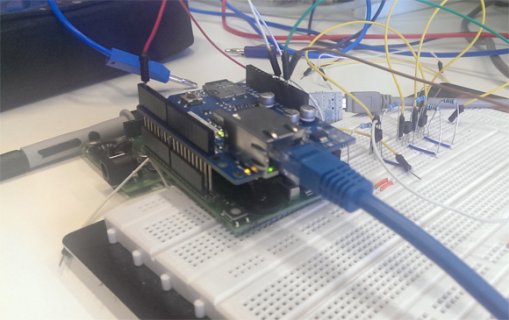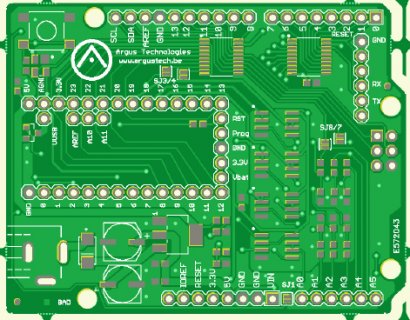Epyon
Well-known member
Hi everyone!
Just like a lot of you, I'm a big user of Arduino and other OSH (and have been since years). I use them in personal as well as in professional projects. Over time, my projects got bigger and bigger, so I needed more capable hardware. I've tried several powerful Arduino alternatives (Beaglebone, Chipkit, you name 'em), but since I discovered the Teensy 3.0 I'm practically hooked up to it. The only thing was that all my projects use the Arduino shield footprint, while the Teensy is quite smaller.
In stead of redesigning all my projects, I opted to design a Teensy-Arduino adapter shield. This shield does just what it says: seamless connection of the Teensy 3.0 to any Arduino shield.

The Teensy-Arduino adapter shield with a mounted Teensy 3.0
Its main features are:
I selfishly designed the board for my own projects, but it hit me it might be useful to others too. I design and fab a lot of boards at my work, so if there's enough interest I might put it into volume production.
For the time being, I'm happy to hear your responses and suggestions to the board. It's still a work in progress, but results up to now have been quite satisfactory .
.

The Teensy-Arduino adapter shield running an Ethernet sketch
Just like a lot of you, I'm a big user of Arduino and other OSH (and have been since years). I use them in personal as well as in professional projects. Over time, my projects got bigger and bigger, so I needed more capable hardware. I've tried several powerful Arduino alternatives (Beaglebone, Chipkit, you name 'em), but since I discovered the Teensy 3.0 I'm practically hooked up to it. The only thing was that all my projects use the Arduino shield footprint, while the Teensy is quite smaller.
In stead of redesigning all my projects, I opted to design a Teensy-Arduino adapter shield. This shield does just what it says: seamless connection of the Teensy 3.0 to any Arduino shield.

The Teensy-Arduino adapter shield with a mounted Teensy 3.0
Its main features are:
- Drop-in, pin-to-pin Arduino Rev3 compatible
- Convert between Teensy and Arduino footprints
- Interface Arduino 5V levels (logic (bidirectional!) and analog) to Teensy 3.3V level: no need to make any change to existing Arduino projects
- On board power supply and automatic power supply selection
- Sinking/sourcing capability of digital pins comparable to Arduino boards
- Coin cell battery holder for Teensy RTC
I selfishly designed the board for my own projects, but it hit me it might be useful to others too. I design and fab a lot of boards at my work, so if there's enough interest I might put it into volume production.
For the time being, I'm happy to hear your responses and suggestions to the board. It's still a work in progress, but results up to now have been quite satisfactory

The Teensy-Arduino adapter shield running an Ethernet sketch
Last edited:


